Pages

 Best practices for a successful launch.
Best practices for a successful launch.
Below are the key practices for successfully introducing Coda to your team or organization. The rest of this guide will walk you through each of these points to guarantee a smooth launch.
Define the problem.
When introducing Coda, it’s important to clearly articulate the particular issue or opportunity that Coda will tackle. Demonstrating how Coda improves productivity, increases efficiency, and/or addresses existing challenges helps emphasize the value and advantages of Coda, making its importance and potential impact more apparent to others.
Prepare for change.
Involving decision-makers, influencers, and enthusiasts from the start will help to garner support, collect feedback, and spark enthusiasm for Coda. These individuals play a crucial role in championing the roll out: addressing concerns and facilitating a seamless transition for the entire team.
Establish onboarding roles.
Establishing clear onboarding roles is essential for promoting clarity, enhancing efficiency, and setting expectations for a successful onboarding to Coda. Your Customer Success team will use these same terms to help align goals and fostering collaboration.
Category
About the role
Learn more
Category
About the role
Learn more
IT / Security
Conducts security evaluations, configures the Coda workspace, and understands the application's use.
Learn more
Sponsor
Key individual(s) within your organization who is driving the use of Coda for specific purposes and championing the adoption of Coda.
Learn more
Champion
Champions are not only tasked with executing the first use case, but also with becoming the architects of future solutions. Initial champions are tapped by a Sponsor.
Learn more
Migration Lead
Assisting with the transition of existing tools to Coda and commonly falls under the duties of the champion role.
Learn more
User
New to Coda and ready to explore how Coda can drive improvements and efficiencies on their team.
Learn more
There are no rows in this table
Encourage a set of norms to integrate Coda into your existing workflows.
Some of our favorites are as follows:
Include a direct link to the relevant Coda doc in your recurring calendar invites. The example below shows Coda’s recurring company meeting with the accompanying Coda doc where information about the meeting is located.

The Chrome Extension makes it easy to search across all your docs—and you can also bookmark into tables as you’re browsing the web.


Pin a doc link to a Slack or Microsoft Teams channel for easy access to team hubs or other relevant docs/playbooks.


Search across all docs you have access to across your entire workspace, all from your docs homepage.


Add a shortcut to the most frequently-used pages in a larger doc. These bookmarks are personalized by user and stay visible to you when pages are hidden.


Folders keep docs organized by group or team. Encourage your team to put relevant docs into designated folders.


Communicate effectively.
By using various communication channels, teams can effectively share information and involve employees during a launch. Mixing asynchronous platforms like emails and Slack/Teams with synchronous methods like all-hands meetings and demos will help teammates to stay well-informed and engaged.
Monitor and evaluate.
By monitoring usage metrics through your admin dashboard, , or , you can stay informed on how your content is being used. This data offers insights into audience engagement, guiding decisions for future updates or enhancements. Monitoring usage goes beyond numbers; it's about understanding the impact of your work and how it resonates with your audience.
Celebrate successes.
Recognize and celebrate successful docs and use cases within the company. This helps sustain enthusiasm and encourages further adoption.
Onboard new employees to Coda.
Embed Coda in your onboarding experience to encourage adoption from day one. Better yet, create your new employee onboarding path as a Coda template! Get started with
Want to print your doc?
This is not the way.
This is not the way.

Try clicking the ⋯ next to your doc name or using a keyboard shortcut (
CtrlP
) instead.